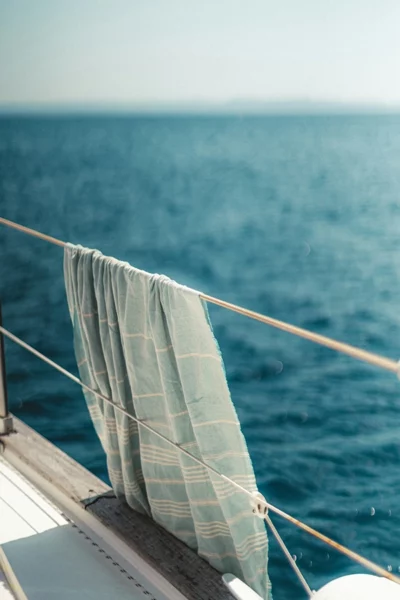Boarding security
Before setting sail:
- Check safety equipment: harness, buoys, distress flares, lifeboat, boat hook, tender oars.
- Check the condition of the annex to ensure that it inflates correctly and that there are no leaks. Start the outboard motor. Check the proper functioning of the bilge pumps and ensure that the fuel oil and gasoline tanks are full and check the engine oil level.
- Make sure there are replacement belts for the engine on board, checking that they are the right size.
- Check the weather forecast. If strong winds are forecast, prioritize staying at anchor; it is never urgent to return a boat in bad weather.
- Anticipate difficulties by taking a reef at anchor, it will always be possible to release it once in the open sea.
- Close the windows carefully before departure.
- Make sure all ends are clear before starting the engine.
- Keep toilet valves closed.
- Check the drainage of water from the engine cooling circuit when starting. Be careful not to confuse the fresh water and fuel oil tanks when refueling.
- Always store the winch handle in its sheath after use.
- When you return, do not hesitate to contact the rental company so that they can return the boat to its place in the marina.
Good navigation.

What should you bring?
- A swim outfit (consider a Lycra T-shirt to protect yourself from the sun)
- A pair of thick-soled shoes for walking in the lagoon (I use old sneakers.)
- Masks and snorkels, Fins (often provided by the rental company) – For comfort, a pair of socks to put in the fins.
- Polaroid sunglasses to avoid reflections (remember to secure them, so as not to lose them.)
- Wear a hat or cap with a strap to prevent it from flying away.
- Bring light rain gear (Kway)
- Don’t forget high protection sunscreen and mosquito repellent.
- A small pharmacy: plaster, sunburn cream, Bandage etc….. However, on boats there is always a first aid pharmacy.


